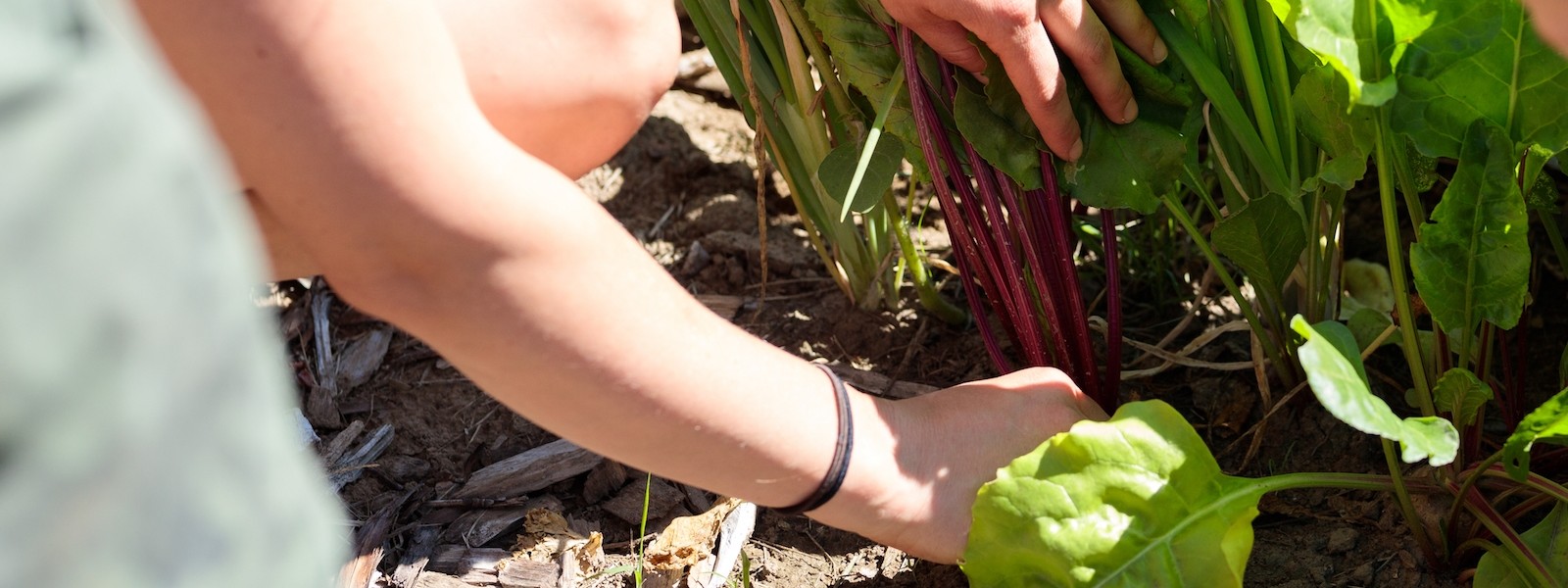Container Gardening
Container gardening is a great, flexible alternative option to a traditional garden. Not only do you have more control over the soil you’re planting in (Want it to be sandier for carrots or more acidic for blueberries? No problem!), but there are fewer weeds to contend with and more ways to get creative with design.
Fewer weeds may make container gardening sound low maintenance, but plants in containers often need more care and attention in other respects. Read on to learn our top tips and to find links for further reading.
Which Containers?
- The number one rule of container gardening: Make sure the containers have drainage holes! Without them, your plants will be water-logged and unhappy.
- Almost anything (with drainage holes!) can be a great container for plants. Terra-cotta is popular, but because it wicks moisture from the soil, plants may require more frequent watering, especially in hot and dry weather. For this reason (and affordability) plastic pots that mimic terra-cotta are also popular. For extra points, find second-hand containers (just make sure to clean them with bleach or hydrogen-peroxide before you use them).
- The bigger the container, the better! Sources vary widely regarding how much space plants need, but here’s an extensive list to get started: https://harvesttotable.com/pot-and-container-sizes-for-growing-vegetable-crops/
Which Plants?
- What do you like to eat? From there, choose varieties that are well-suited for containers, such as “half long” varieties of carrots. Many seed packets will address whether or not the variety will work well in a container, and if you’re planning to buy starts, don’t hesitate to ask an employee for suggestions. To get started, find variety suggestions here.
Healthy Soil:
- Look for “potting soil” or a mix made specifically for containers. Squeezed in your hand, it should feel like a moist cake; not too dense, not too loose. Garden soil and soil dug up from the ground, when placed in pots, becomes very dense over time and suffocates your plants’ roots.
- Provide nutrients! Since potting soil is sterile (which ensures you won’t inherit any pests or diseases), it contains none of the tiny microorganisms (“microbes”) that provide plants with the nutrients they need and help create a healthy “living soil.” (Read all about microbes here: https://cedarcirclefarm.org/tips/entry/the-living-soil-microorganisms.) To provide your plants with nutrients, consider using a liquid organic fertilizer every two weeks (after your transplants have had a few weeks to settle into their new homes). Be sure to follow directions carefully; too much fertilizer can be detrimental to plant health.
- Pile on the compost! Combine finished compost with your potting soil or add it to the top of the soil after planting. Not only does compost deliver the nutrients your plants need, it also brings with it those all-important soil microbes!
When to Water:
- Often (but not always!) potted plants dry out faster than those in the ground. Keep a hose handy!
- Water deeply – until water comes out of the drainage holes. Roots won’t go where it’s too dry, so watering through the entire pot encourages roots to grow deep into the pot, ensuring a stronger, healthier plant.
- Most plants don’t like to have “wet feet” (can you blame them?), so resist the urge to water, water, water. Too much water can harm your plants as much as too little! Stick your finger into the soil to the second knuckle; if the soil feels dry and doesn’t stick to your finger, it’s time to water. Other signs that plants are thirsty: droopy leaves and soil that is pulling away from the sides of the container.
- Water the soil, not the leaves. Though you may want to run through a sprinkler on a hot, sunny day, plants don’t! Wet leaves are more susceptible to damage via sunburn and disease.
- Finally, as with all gardens, place your containers where they’ll receive ample direct sunlight (at least 6 hours is ideal for most plants). Happy growing!
Other Helpful Resources:
- Antioch University New England’s Community Garden Connections Resource Packets, including one on container gardens
- A writeup about container gardening from The Farmer’s Almanac about container gardening
- Savvy Gardening’s Top Tips
Interested in learning more? The Grower’s Library at Johnny’s Selected Seeds may have the information you’re looking for.

